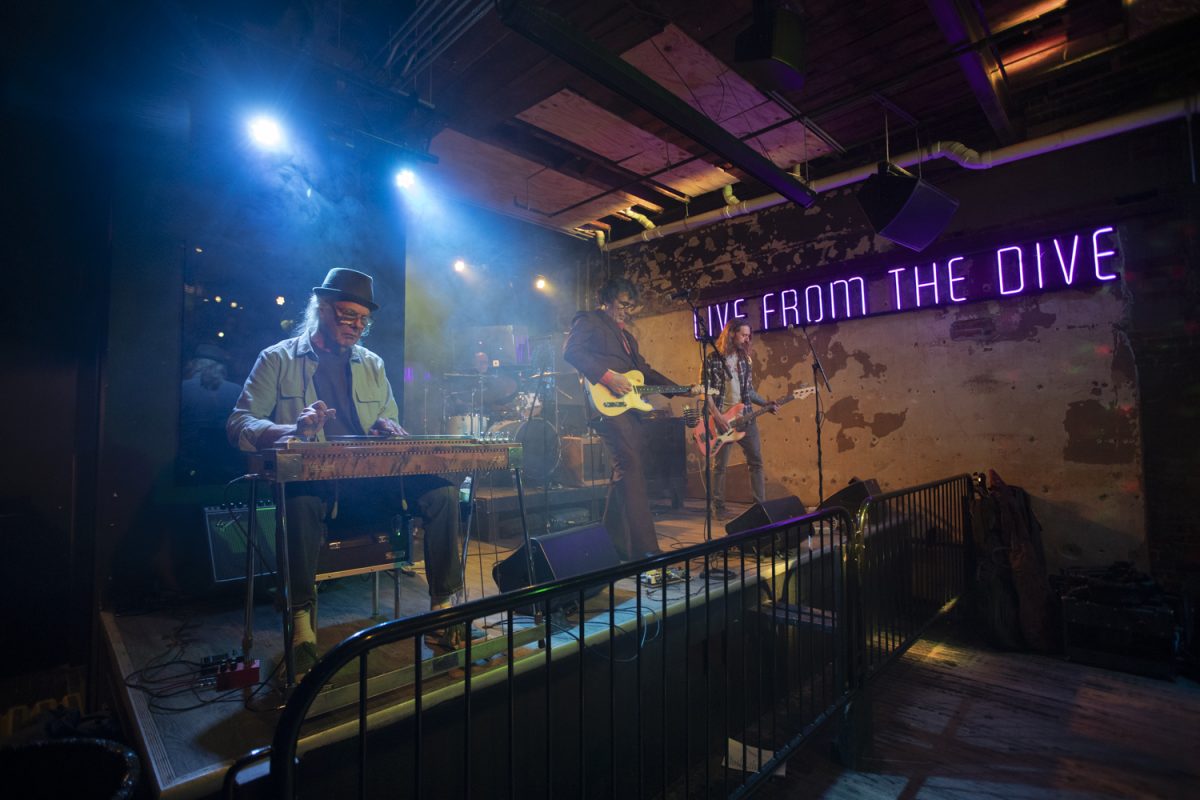Taylor Mac melds various modes of performance, which has garnered consistent praise in the greater artistic community. His originality and versatility has culminated in honors such as MacArthur Fellowship, Pulitzer Prize Finalist for Drama, NY Drama Critics Circle Award, among others.
He was raised by his mother in Stockton, California — a community he describes as a predominately white and homogenous in their values. Mac had never seen an out homosexual of any gender or expression until he attended an AIDS march. An overarching theme of his work: simultaneously building community while it is falling apart comes from his experience at said march.
Mac will perform a segment of his larger work A 24-Decade History of Popular Music at 7:30 p.m. Saturday at Hancher. While the audience members may not get all 24 hours, they will get a glimpse of the massive, episodic performance.
Mac started out his artistic career performing as a drag queen in small gay clubs and bars. UI Assistant Professor Jennifer Buckley said the cabaret performances were vital in shaping his ability to break the fourth wall with his audiences as well as deliver consistently in chaotic environments.
From drag performances at the Slide — a now defunct gay club — to performing traditional theatrical Western canon off-Broadway, Mac displayed an unprecedented form of gender fluidity.
In Shakespeare’s A Midsummer Night’s Dream at Classic Stage Company in 2012, Mac reinvented the role of Puck by introducing a sense of malleability and restlessness in the character. His ability to represent all gender expressions was also seen in his performance of Brecht’s The Good Person of Szechwan.
The Young Ladies Of offers an autobiographical account of his father. Set in 1952, Lt. Robert Mac Bowyer places an ad in an Australian newspaper asking for correspondence from ladies. Mac combines the enumerable of letters his father received with his original music and script. By juxtaposing the hyper-masculine military life of his father against his own, Mac provides the audience a way into witnessing his lineage.
After these theatrical successes, Mac delved into durational performance — a long-standing tradition adopted by the vanguard realm of theater over the past decade. Buckley said that along with marking the passage of time, durational performances tax the body of the performer to such an extent that the performance gains a sense of reality.
“One of the aspects of durational performance Mac is most interested in is the inevitability of the actors and the audiences starting to fall apart,” Buckley said. “That is precisely when we are most vulnerable to each other.”
Decades in the making, A 24-Decade History of Popular Music has solidified a place in the storied history of durational performances. As a Pulitzer Prize finalist, A 24-Decade History of Popular Music is a 246-song epic of profound depth and precision about our country.
Buckley said Mac began the show by remarking that they were performing on unseated Native land by saying, “We have a lot of history on our back, and we have to figure out how to deal with it.”
His response was to hand over his prized ukulele to a Native performer to open the show. This gesture forced the audience to grapple with the historical injustices.
“[Mac] is still prefacing and repeatedly reminding audience members that there is a history of injustice, oppression, and slaughter that is integral to our country’s history,” Buckley said. “On one hand, we are having a tremendous amount of fun seeing this sometimes invented history from the margins being told, and on the other hand, we are never allowed to forget the dominant narrative.”
There is no passive spectator in A 24-Decade History of Popular Music; the audience plays a crucial role in a larger, more intimate spectacle. Mac affirms this by saying, “We are making a 24-decade history of popular music; it is a radical fairy realness ritual sacrifice … The audience is the sacrifice.”
Buckley attended the production in New York City, which was the only time it was performed in its duration. She said the ritualism enhanced the numerous participatory elements of the performance.
Her favorite participatory element took place during the World War I decade, when the whole audience was “blindfolded as if we were physically disabled during the war and with a partner, we fed each other grapes — therefore, the performance activity is on the body of the participant as much as it is on Taylor Mac,” Buckley said.
Mac has popularized an unpolished aesthetic. Repurposed, everyday materials make up the bulk of his costumes designed by Machine Dazzle. For example, in the 1850s decade, Mac wears a costume made up of recycled potato-chip bags, chess boards, and a leprechaun hat.
“Each element of the costume is going to have historical significance,” Buckley said. “The costumes are outrageously spectacular as creations, but each element of the costume has meaning.”
MacArthur- and Tony-winning designer Mimi Lien creates a streamlined set that uses the entire performance space. The flexibility of the set provides a visually interactive and multifaceted spectacle.
“There is a real palpable sense of artists as community in the room in a way that was for an outsider really remarkable — there was evidence of it everywhere,” Buckley said. “Mac created this large and diverse community that together made the work.”
The radical fairy stands as marker for identity in A 24-Decade History of Popular Music. During the performance, Mac continually confronts dominant heterosexual constructs such as the nuclear family. By doing so, he makes room for a wide variety of expressions and relationships.












